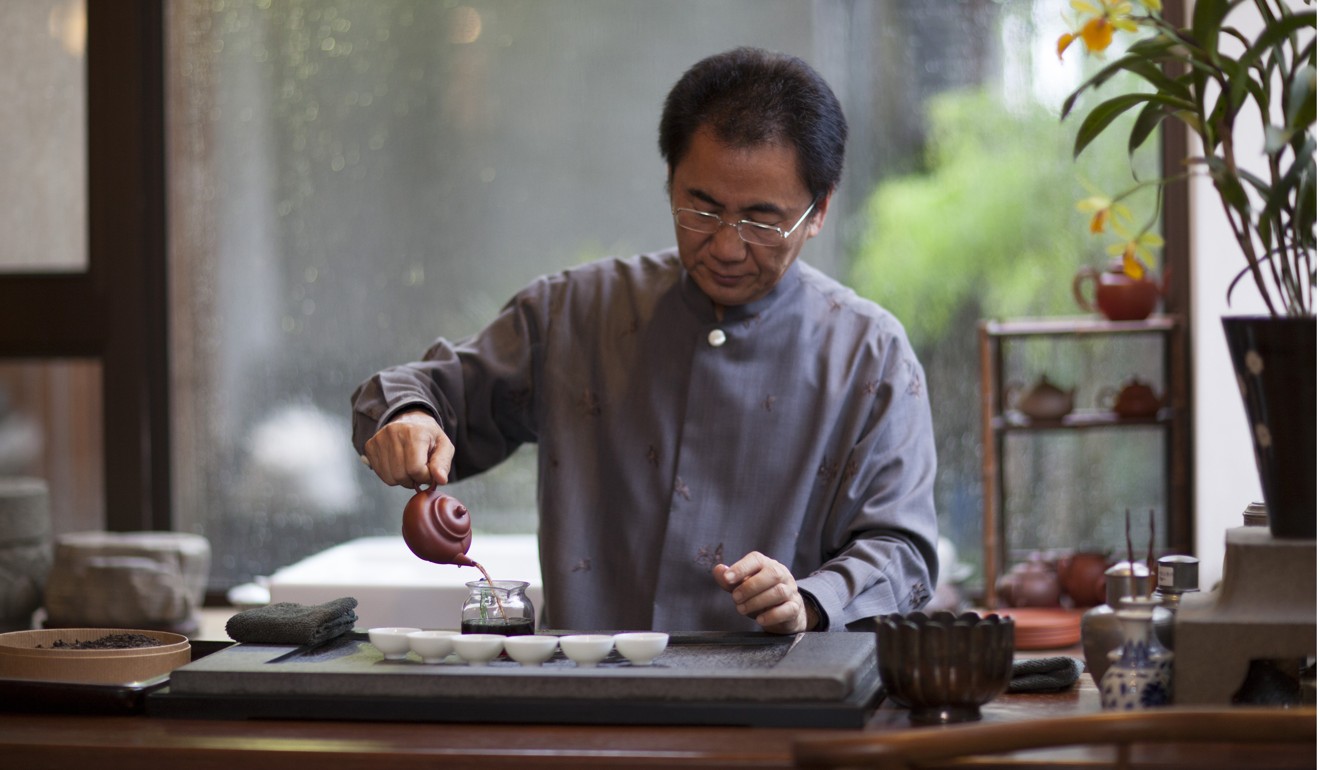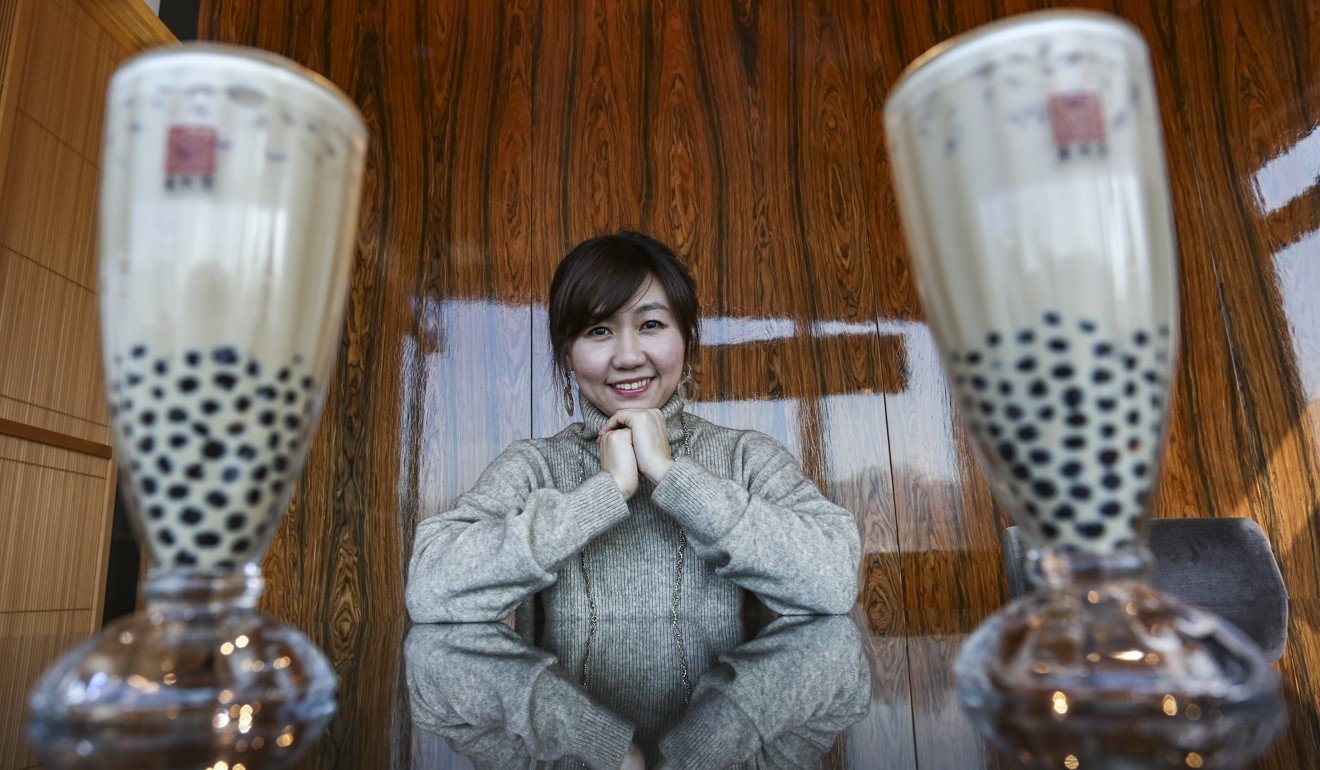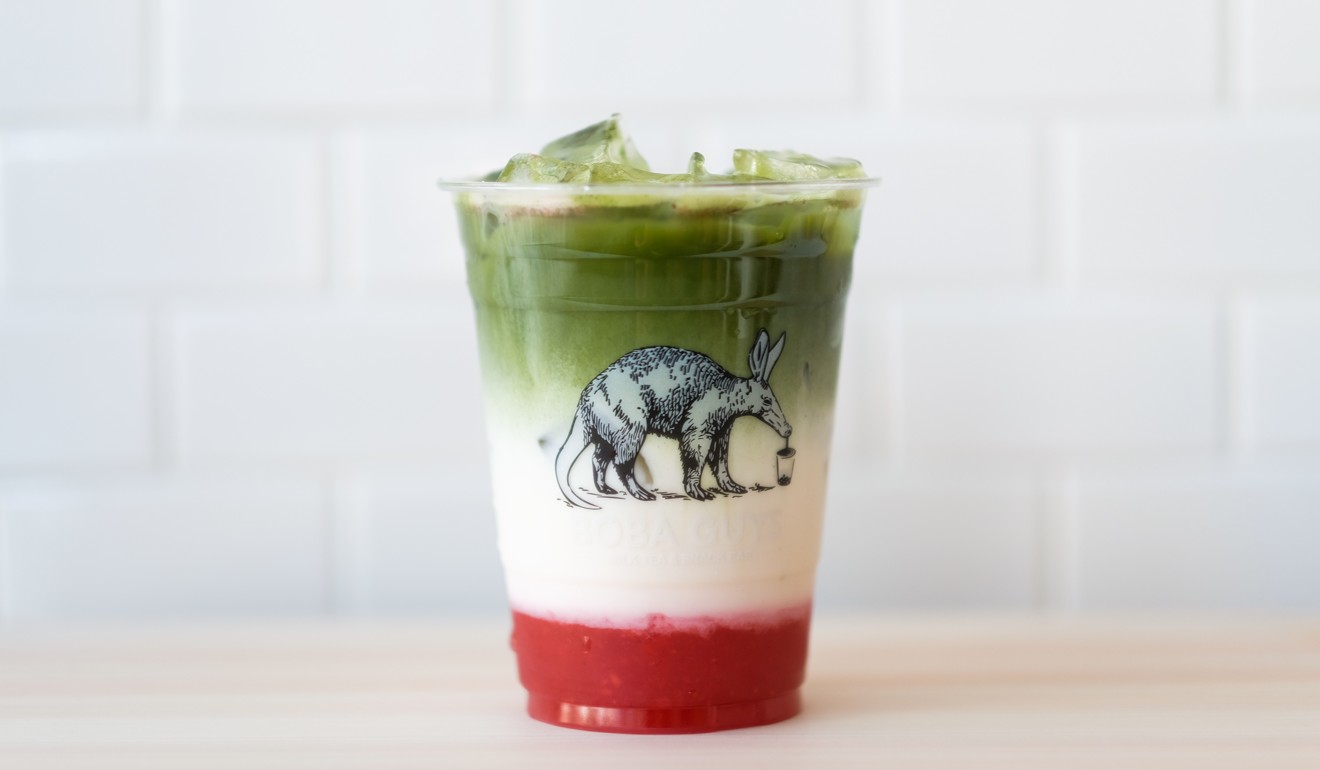
History of bubble tea: how boba, born of a staff competition in Taiwan, became a global phenomenon
- Created in Taichung, Taiwan in the 1980s, bubble tea is a mix of milk tea, tapioca pearls and syrup
- It spread through Asia, gaining popularity and then exploded across the United States
Vancouverite Christopher Cheung was nine when he took his first sip of bubble tea. The mango-flavoured milk tea filled with “really chewy” balls was given to him by his aunt during a family dinner; but the youngster was less than impressed.
“It was very orange looking and it was the first time I’d ever seen the black tapioca pearls. The mango tasted really fake … like artificial flavouring that you would find in confectionery,” says Cheung.
Almost two decades on, the journalist is a diehard bubble tea fan, having sampled it at almost every tea shop in the Canadian city. The 26-year-old slurps down the drink at least once a week, and even made time for a cup on his wedding day.
Bubble tea, also known as boba tea, and zhen zhu nai cha in Mandarin, is a highly caffeinated and sugary drink made from tea, milk, syrup and its instantly noticeable large black tapioca “pearls”.
Listen to the Eat Drink Asia podcast: the story of bubble tea
Subscribe or listen via Spotify or Stitcher - coming soon to iTunes
Cheung, whose parents are from Hong Kong, grew up hanging out in Vancouver’s bubble tea shops after school with friends. Blasting out Canto- and Mando-pop hits from Jay Chou and the like, the outlets offered more than just a place for the third-culture kids to get their milk tea fix.
“A lot of my friends grew up in North America, but we are all of East Asian heritage. And I think there’s just something about being in these places. It’s kind of like a coffee shop or bar, but there’s a lot of connection with an Asian culture,” he says. “It was nice to have this physical place for us to tap into that identity of being Asian while still having grown up in [Canada].”

Bubble tea, which has its roots in 1980s Taiwan, has become something of a global sensation. The drink started life at the Chen Shui Tang tea shop in the city of Taichung, where owner Liu Han-chien sold his high mountain oolong tea.
The story goes that Liu wanted to change the way people drank tea, so he experimented by putting traditional milk tea in a cocktail shaker with ice.
“I think it’s a kind of revolution in [Chinese] tea history because no one served chilled tea at that time. People thought we were crazy … but young people liked it very much,” his daughter, Angela Liu Yen-ling, explains. She was recently in Hong Kong to announce the opening of a Chen Shui Tang tea shop in the Kowloon neighbourhood of Kwun Tong.
The hottest food trend right now isn’t ‘vegan’. It’s ‘plant-based’
Liu says the chilled tea became so popular that her father’s side business quickly became Chun Shui Tang’s biggest seller.
It became known as “bubble tea” because of the thick layer of foam that forms on top of the drink after it is shaken. The addition of pearls, or large tapioca balls nicknamed “boba”, dates to 1987, when her father held a competition among his staff to come up with a creative concoction. His store manager, Lin Hsiu-hui, liked to eat fen yuan, or tapioca balls, so she added them to the milk tea. The rest is history.

“At the very beginning she didn’t offer it to my father. She actually did a pilot test with some customers and they loved it,” Liu says. “She sold it for one week and then told my father about it. Customers liked it very much.”
They brainstormed to come up with a better name than fen yuan and settled on “black pearl”, which is how bubble tea is known in Chinese.
Lin still works for Chun Shui Tang, as executive director of product development. “At that time she already showed her talents. She has a very sensitive tasting [palate] so she can taste very small difference between different ingredients. We call her golden tongue,” Liu says.
From Taiwan, bubble tea spread to other Asian countries and communities around the globe, until it suddenly erupted in popularity in mainstream North America around 2014.
Stiff competition in the drinks market boosted the quality of bubble tea and the number of flavours on offer – such as jasmine milk tea, taro milk tea, mango green tea, and even avocado milk tea. Toppings can include aloe jelly, brown sugar panna cotta, and chia seeds.
According to Cheung, the drink’s phenomenal rise came in step with that of foodies on social media, and brands getting visually creative with their product – think stir-fried boba and drinks served in light-bulb-shaped glasses.
Cambodia chefs go in search of forgotten flavours as renaissance in Khmer cuisine gathers pace
The bubble tea shops that have sprung up in North America are no Chinese “mom and pop” businesses set up to keep the family financially afloat. Bubble tea shops are franchises run by young, educated and social media-savvy entrepreneurs seeking a trendy business opportunity.
One successful venture is Boba Guys, started in San Francisco by Andrew Chau and Bin Chen, both 36 years old. Boba Guys is one of the largest independent bubble tea chains in the US, with 15 outlets, each selling an average of 1,000 cups a day.
Like Cheung, friends Chau and Chen were introduced to the drink from an early age by their families while growing up in New Jersey and Texas respectively. The pair knew they were onto a winner after selling out of boba at their first San Francisco pop-up in 2011.

“People ask, ‘When did you guys turn a profit?’ We were like, ‘Actually we were profitable from day one’,” says Chau.
They attribute their success to the location of their first store, social media and their update of the “staple” bubble tea. They purposely decided not to open a store in Chinatown or a predominantly Asian community in San Francisco.
“We were very intentional about not preaching to the choir,” Chen says, instead choosing the trendy set that hang out around the Mission District. “We knew if we could reach them, then it could probably reach a bigger audience.”

The pair designed their stores with Instagram in mind – large logos, bright lighting – to ensure customers would share the “experience” with their followers.
Finally, they took the original milk tea drink and enhanced it, with the new “remixed” flavours for which they have become known.
“We weren’t the first to do matcha lattes, but I’m pretty sure we were one of the first, if not the first to invent the strawberry matcha latte, which is now often copied,” Chen says, with other popular flavours being coffee milk tea, rose black tea, Hong Kong style tea (with condensed milk), and black sesame latte.

The duo say the upsurge in bubble tea’s popularity also reflected a shift in the rising cultural identity of minorities in the US at the time.
“[In 2013] there was a huge minority representation, an ethnic food movement, and we’re still in the middle of that. We’re in a really interesting time in our lives where you’re seeing people that look like us and sound like us starting to be represented … It’s cool to be Asian. Food just happens to be one of those easily shareable, exportable things,” says Chen, whose parents are from Taiwan.
For Chau, whose folks are from China and Taiwan, food and drink are the “best way to connect people”.

“We always felt like third-culture kids. We were immigrant kids and I never felt fully Asian or fully American, even though we speak both languages; [with Boba Guys] we felt like … we’re a [cultural] bridge between two different worlds. Food has no barriers.”
The evolution of immigrant cuisines is what Krishnendu Ray studies. He is an associate professor of food studies at New York University, who together with a team of nutritionists, economists and historians, look at immigrant food cultures and how they evolve.
We weren’t the first to do matcha lattes, but I’m pretty sure we were one of the first, if not the first to invent the strawberry matcha latte, which is now often copied
He says bubble tea is so popular because it’s a relatively familiar drink that is served in a cup with a straw, and has a delicious combination of milk tea, sugar and texture – thanks to the chewy tapioca balls.
Its relatively cheap price point also makes it accessible for everyone to try at least once. What makes it more successful than Chinese-American dishes such as chop suey, egg foo yong and General Tso’s chicken is the way it was introduced to mainstream consumers.
“One of the attractive things about bubble tea is the fact that it is spreading to the middle class, professional classes, so it has a lot more prestige at the very beginning compared to food associated with poor working-class Chinese, which is what I call a hierarchy of taste. The higher the class your food is, the easier it is to circulate in global circuits and acquire prestige. It happened with French food, American movies, American ads, British novels. And it is in some ways going to happen to Chinese culture.”
With the proliferation of bubble tea shops on every other street corner in New York City, much like in Hong Kong, Ray believes bubble tea will probably stick around for a long time. He compares it to Italian cuisine when Italian immigrants first came to the US at the end of the 19th century.

“Most of the conversation about Italian food was how terrible it was – how garlicky, how spicy, how it made them drink alcohol. And of course alcohol was a bad thing because at that point of time, there was a robust discussion about prohibition. And in fact Italian food had almost no prestige in American cities,” he says.
But by the 1980s, there was the emergence of expensive Italian restaurants, and Ray believes the upscaling of Chinese food is well on its way thanks to bubble tea – and it could even become as ubiquitous as pizza.
“I think Chinese [food] will eventually go the way pizza is in the world today; people rarely think of it as a southern Italian thing. And bubble tea would emerge out of the Chinese world, and eventually becoming part of a global cultural artefact.”
Additional reporting by Yang Yang











